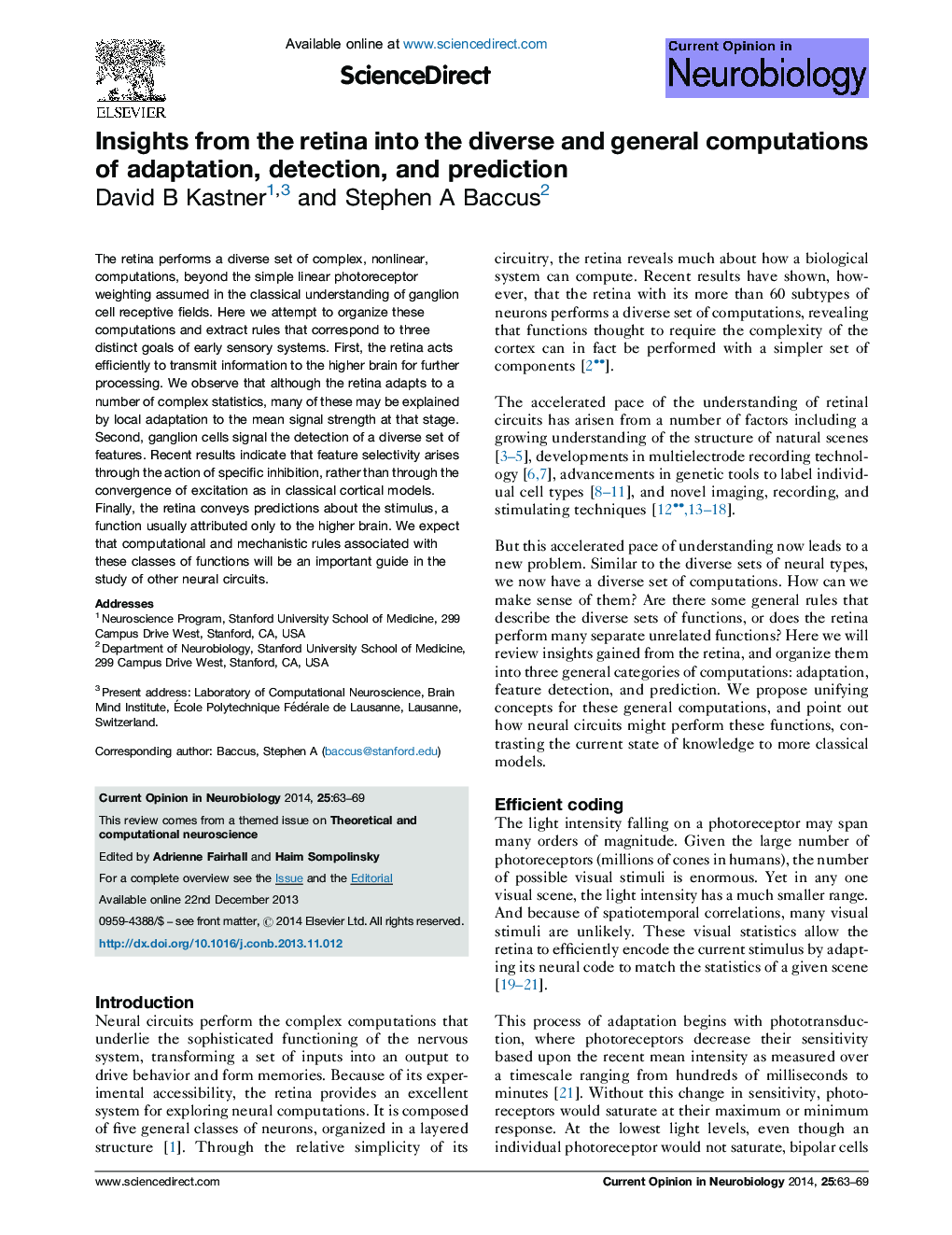| Article ID | Journal | Published Year | Pages | File Type |
|---|---|---|---|---|
| 6266534 | Current Opinion in Neurobiology | 2014 | 7 Pages |
â¢Complex retinal computations can be classified into three general categories.â¢Adaptation to complex statistics may conform to local adaptation to the mean signal.â¢Complex feature selectivity is created primarily through specific inhibition.â¢Invariance arises from summation of rectified signals as may occur in cortex.â¢The retina conveys predictions using the statistics of its natural input.
The retina performs a diverse set of complex, nonlinear, computations, beyond the simple linear photoreceptor weighting assumed in the classical understanding of ganglion cell receptive fields. Here we attempt to organize these computations and extract rules that correspond to three distinct goals of early sensory systems. First, the retina acts efficiently to transmit information to the higher brain for further processing. We observe that although the retina adapts to a number of complex statistics, many of these may be explained by local adaptation to the mean signal strength at that stage. Second, ganglion cells signal the detection of a diverse set of features. Recent results indicate that feature selectivity arises through the action of specific inhibition, rather than through the convergence of excitation as in classical cortical models. Finally, the retina conveys predictions about the stimulus, a function usually attributed only to the higher brain. We expect that computational and mechanistic rules associated with these classes of functions will be an important guide in the study of other neural circuits.
Graphical abstractDownload high-res image (327KB)Download full-size image
